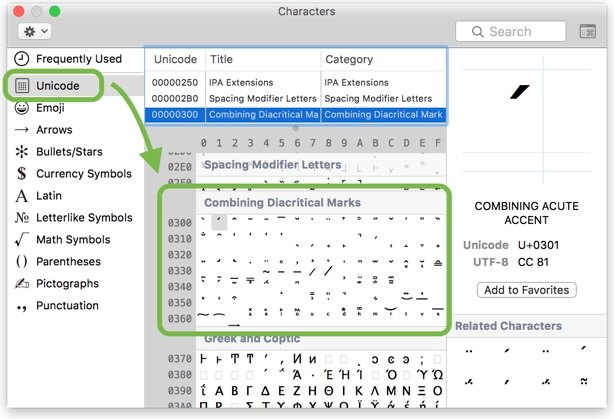

Subsequently the other two Greek accent marks were borrowed into French for other purposes. To resolve the many ambiguities, the acute accent (´) was borrowed from Greek for the sound. For example, e in French came to represent both and, sounds that both happen to be very common at the ends of words. The tendency was thus to retain the existing set of letters even as phonetic developments created new demands on the writing system. Greek still uses exactly the same alphabet that it used two thousand years ago, and most of the languages that use the Latin script have added only the letters J (a variant of I) and U and W (both developed from V) to the alphabet used by the Romans. Writing is conservative speech, however, is not. These devices were all very uncommon, and none of them persisted. A mark called the apex, which resembled an acute accent (´), was sometimes written over a long vowel. In Latin, various devices to indicate long vowels were sporadically employed, such as doubling the vowel letter or drawing the letter I especially tall. Originally optional and uncommon, these and other marks came to be essential to the spelling of the language. Greek developed three accent marks-the acute, the circumflex, and the grave-for its two varieties of tonic accent (the grave indicated suppression of accent). On the whole, the ambiguities that resulted from these deficiencies were only a minor inconvenience and did not usually result in confusion.Īs the languages changed, some of these ambiguities became more acutely felt. Latin, whose script is ultimately of Greek origin, likewise did not distinguish long and short vowels orthographically.

Greek, for example, did not notate the phoneme or tonic accent it also neglected vowel quantity in all but two pairs of vowels. Like most scripts, they failed to make some significant phonetic distinctions. The earliest alphabets had no diacritical apparatus. This article attempts to fill the void with a comprehensive treatment on the use of diacritical marks in English.
Combining diacritical marks in word how to#
As a result, many people do not know how to use these signs or even how to interpret them when they see them.
Combining diacritical marks in word manuals#
Schools in English-speaking countries tend to ignore the subject entirely manuals of style may discuss diacritical marks only in the context of the typesetting of foreign languages. Accents and other diacritical marks in EnglishĪccurate and thorough information on the diacritical marks (or diacritics) used in English can be difficult to obtain.


 0 kommentar(er)
0 kommentar(er)
